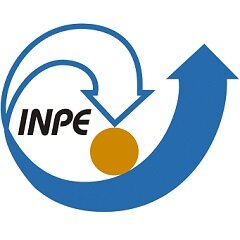Texto III
3.3 NETWORK LAYER
3.3.1 GENERAL FEATURES OF NETWORK PROTOCOLS
Data Forwarding differs greatly from data routing, defined in reference [60] as ‘the process of selecting paths from origins to destinations in a network’. Here, the concept of an endpoint is global over a series of open and extensible subnetworks. Whenever routing is done across multiple subnetworks, a network routing protocol is required, which is not in the purview of SPP. It is essential that when one plans to route data over an open network composed of multiple subnetworks, one uses a network protocol.
By using the Encapsulation Packet Protocol as a shim, other CCSDS-recognized Network Protocols such as BP (references [55] and [56]) and IP can be used over space links. The data units of network protocols can also be transferred using the Space Packet Protocol done in a mission-specific manner using APID(s) as set by management. Over a space link, protocol data units of the network protocols (i.e., BP, IP, or others carried through SPP or EPP) are transferred within the Space Data Link Protocols. In particular, the Space Data Link Protocols have the capability to carry several protocol data units of the Internet Protocol, multiplexed or not- multiplexed, within the Encapsulation packet. IP over CCSDS (reference [45]) specifies how CCSDS-recognized IP datagrams are transferred over the link.
3.3.2 ADDRESSING OF NETWORK PROTOCOLS
An End System Identifier, as used by IP and BP, unambiguously identifies a single end system or a group of end systems. If it is necessary to identify both the source and destination when using End System Identifiers, a pair of End System Identifiers must be used. These identifiers, which either identify or map to locations in network topology, are specified in the IP or BP PDUs, and they are used by the IP or BP routing nodes to perform routing decisions at each step along the end-to-end path.
As already mentioned, CCSDS Encapsulation Packet Protocol allows the use of other CCSDS recognized Network Protocols within their own end system identification notations. CCSDS developed Delay Tolerant Networking (references [55] and [56]) as the means to perform interoperable internetworking in space, in either disrupted or delayed end-to-end communication environments.
ACRONYMS
APID: Application Process Identifier
BP: Bundle Protocol
CCSDS: Consultative Committee for Space Data Systems
EPP: Encapsulation Packet Protocol
IP: Internet Protocol
SPP: Space Packet Protocol
Fonte: Extraído e adaptado do relatório CCSDS 130.0-G-4 “Overview of Space Communications Protocols”.


